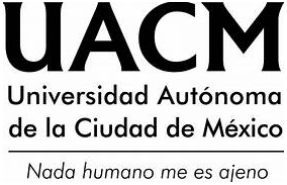Blonde Venus y el género cinematográfico de la mujer caída
DOI:
https://doi.org/10.29092/uacm.v8i17.456Keywords:
Fallen woman, representation, classic Hollywood cinema, gender, familyAbstract
This article analyzes some problems related to the representation of the fallen woman in the Blonde Venus film, regarding to the fact that its unconventional treatment caused many setbacks with censorship, and this conflict allows to observe closely the representation mechanisms in the Hollywood’s classic cinema. In spite of the film reassumed the western dichotomy between the images of the mother and the prostitute (Mary versus Eve), Marlene Dietrich’s character incarnates both roles at once, generating ambiguities and contradictions that de-stabilize the moralist discourses on the fallen woman and on the housewife; such discourses meet a peak by the end of the nineteenth century, to be later reassumed by the cinema.
Downloads
References
Anderson, Michael (1988), Aproximaciones a la historia de la familia occidental, 1500-1914, México: Siglo xxi editores.
Bornay, E. (2008), Las hijas de Lilith, Madrid: Cátedra.
Campbell, R. (1999/2000), “‘Fallen Woman’ Prostitute Narratives in the Cinema”, en Screening the Past, núm. 8, noviembre-marzo, Melbourne, AU: La Trobe University, pp. 1-17. Artículo en línea
disponible en: http://www.latrobe.edu.au/screeningthepast/
firstrelease/fr1199/rcfr8b.htm, febrero de 2009.
De los Reyes García Rojas, A. (1997), “Sesiones de fotografía”, en Dolores Del Río, un mito del cine mexicano, cd-rom, México: EDITEC.
Dumas, A. (Hijo) (2006) [1848], La dama de las camelias, Buenos Aires: Losada.
Jacobs, L. (1991), The Wages of Sin. Censorship and the Fallen Woman Film 1928-1942, Madison, Wis.: University of Wisconsin Press.
Kaplan, E. A. (1998), Las mujeres y el cine. A ambos lados de la cámara, Madrid: Cátedra/Universitat de València/Instituto de la Mujer.
Lasalle, M. (2000), Complicated Woman. Sex and Power in pre-Code Hollywood, Nueva York: Thomas Dunne Books.
Nowell-Smith, G. (ed.) (1996), The Oxford History of World Cinema, Nueva York: Oxford University Press.
Roffman P., Purdy, J. (1981), The Hollywood Social Problem Film. Madness, Despair, and Politics from the Depression to the Fifties, Bloomington: Indiana University Press.
Roudinesco, E. (2002), La familia en desorden, México: Fondo de Cultura Económica (FCE).
Published
Issue
Section
License
This Journal is licensed under Creative Commons Mexico 2.5. It is allowed to reproduce and disseminate the contents of the Journal for educational or research purposes, not for profit, as long as they are not mutilated and cite the source (Andamios, Revista de Investigación Social) and the author.
The copyright of the articles published in Andamios, Revista de Investigación Social are transferred by the author(s) to Universidad Autónoma de la Ciudad de México when the originals have been accepted, so that they are published and distributed both in the printed and electronic versions of the Journal. However, as established by law, the author(s) retains their moral rights. The author(s) will receive a form of assignment of copyright that they must to sign when their original has been accepted. In the case of collective articles, the signature of one of the authors will suffice, provided that the latter has obtained the consent of the others.
Authors may use the material of their article in other works or books published by themselves, with the condition of quoting Andamios as the original source of the texts.
The articles contained in this publication are the responsibility of their authors and do not compromise the official position of Andamios, Revista de Investigación Social of the Universidad Autónoma de la Ciudad de México.


